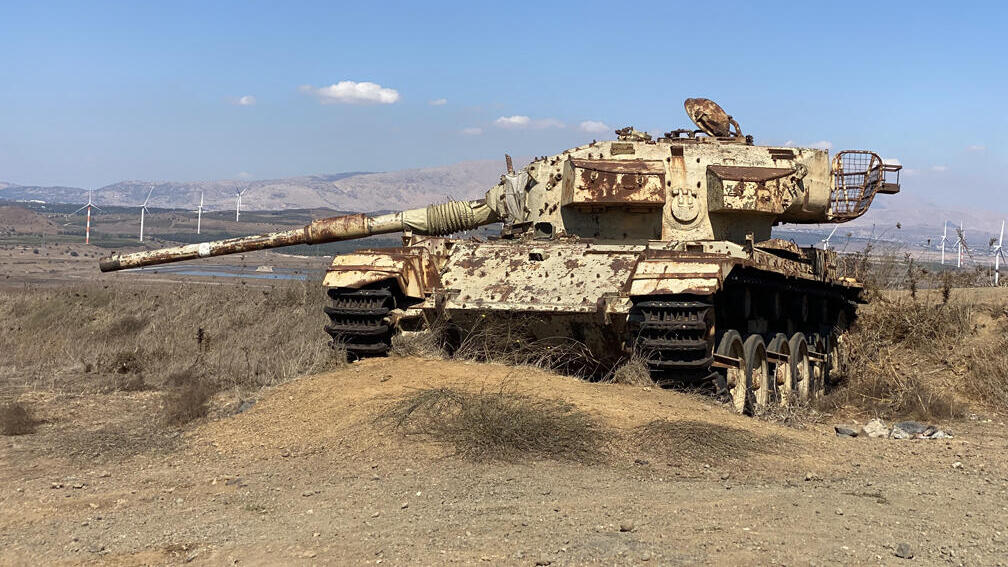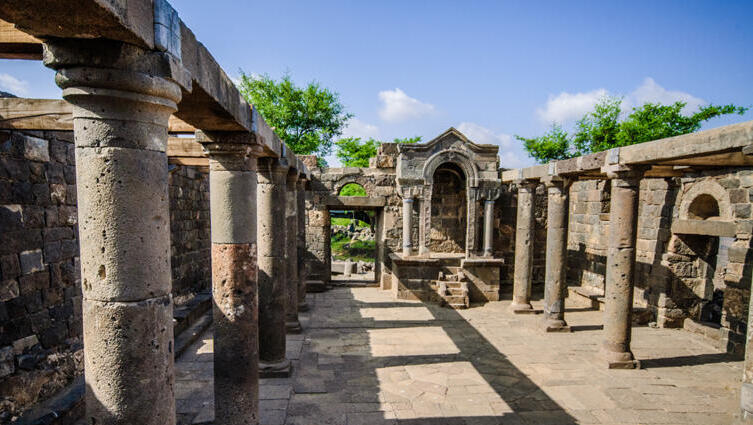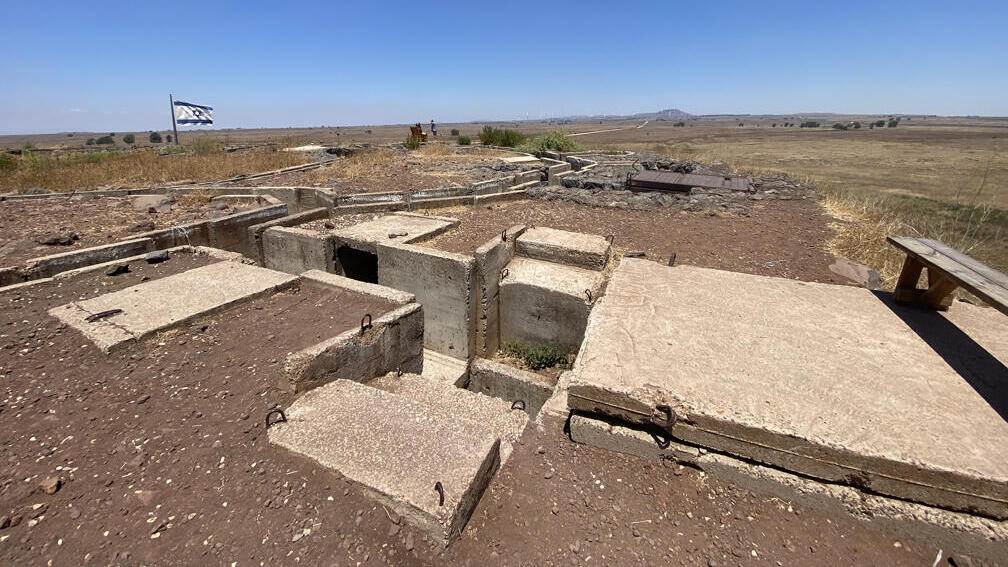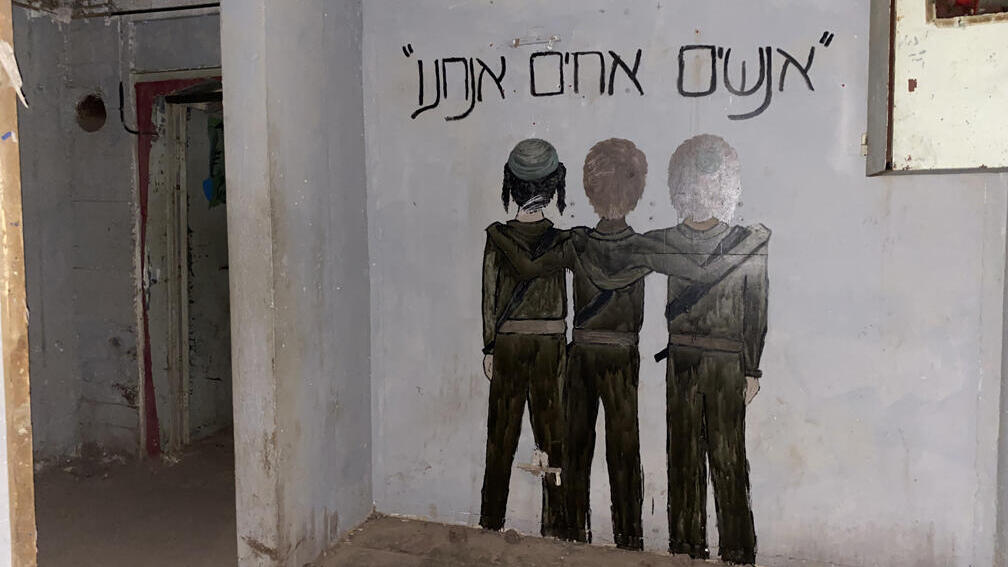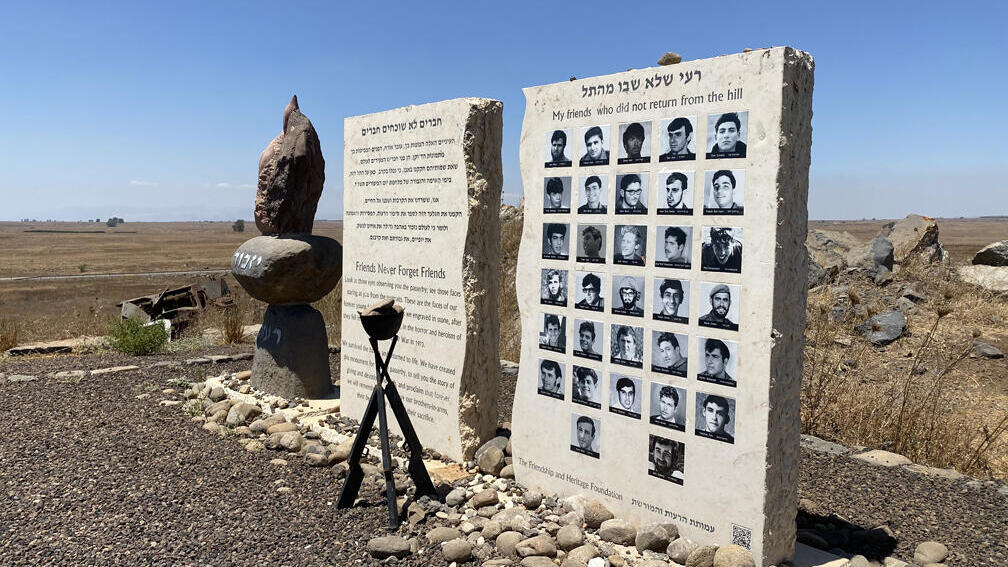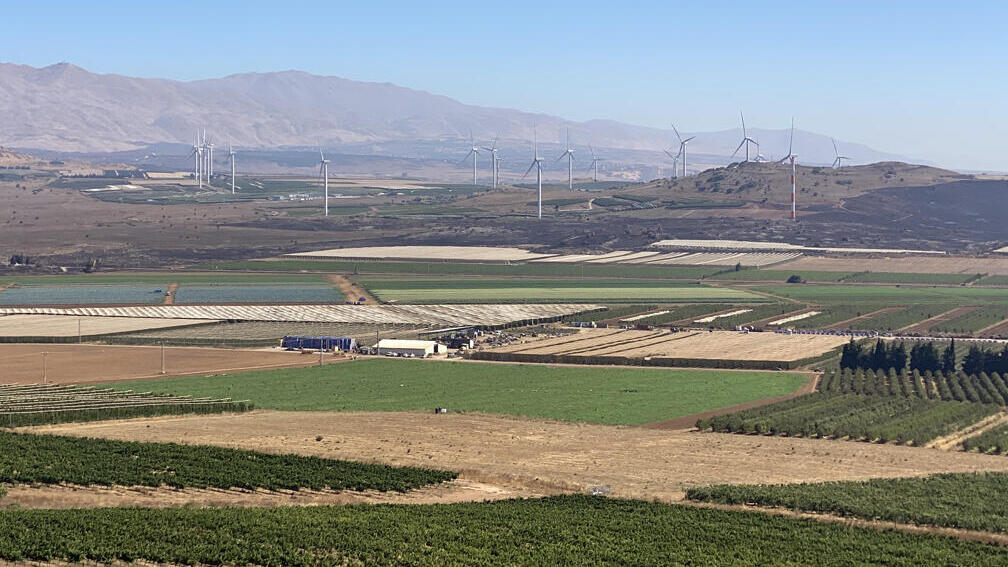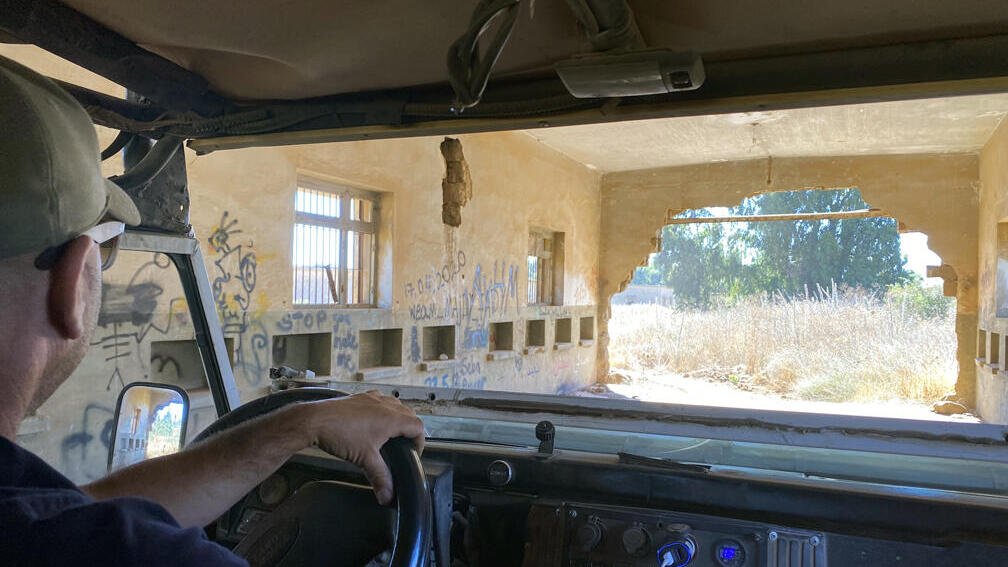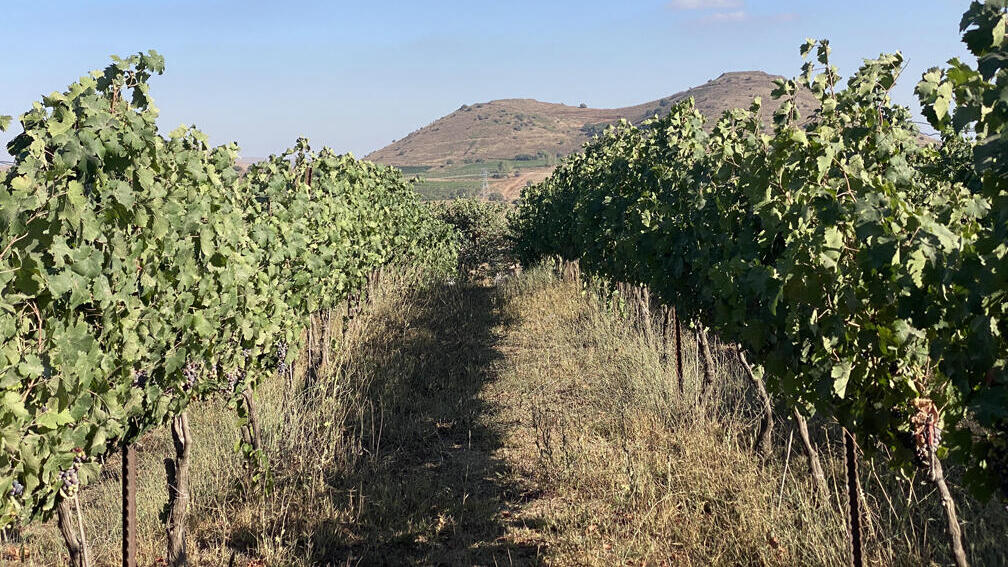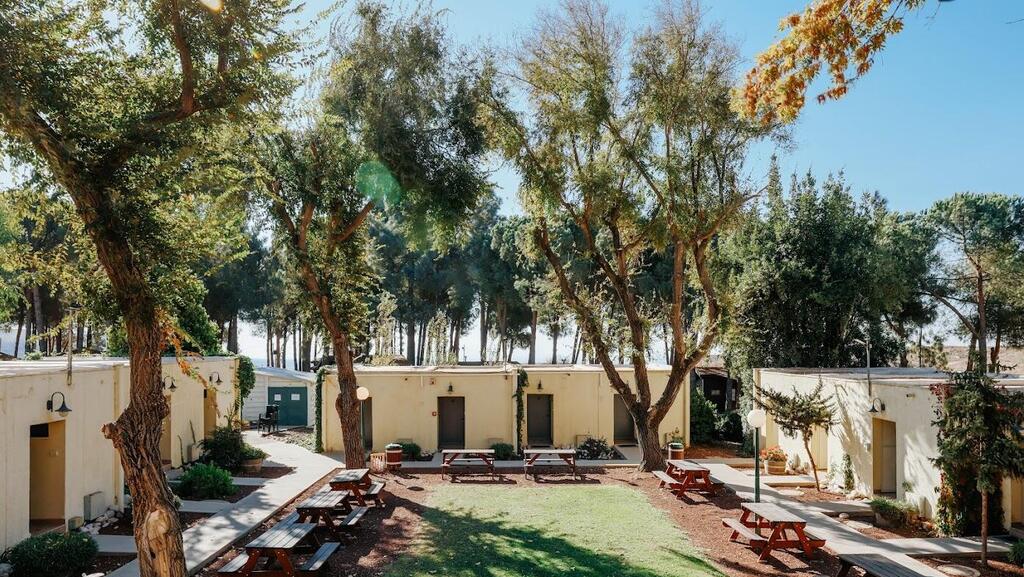Getting your Trinity Audio player ready...
"This is the only point in the journey where you can see the Sea of Galilee," declares guide Gil Moalem, looking in awe over the breathtaking panoramic view from the site of Ein Keshatot in the southern Golan Heights. "Until the Six-Day War, the border between Israel and Syria was at the Galilee, and after that, for six years, the Golan began to be settled based on the principle that the cease-fire line would determine the border."
Read more:
However, the numerous minefields, the remnants of tanks, and the abandoned bunkers encountered on every trip through the Golan still hint at the shattered land and what unfolded in this region 50 years ago, in the winter of 1973. "In the Golan, there's a sort of dissonance between the vineyards and the tourist Riviera, and the remnants of war that are seen everywhere," says the tourism team at Kibbutz Ortal. They currently are launching a new experiential tourism journey called "50 Years Later," offering a glimpse into Israeli society today, against the backdrop of the 50th anniversary of the Yom Kippur War.
The unique three-day journey kicks off with a deep plunge into history as participants explore the archaeological site of Ein Keshatot (Umm el-Qanatir). Standing amid the ruins of its ancient synagogue from the Mishnaic and Talmudic eras, it's one of the most magnificent synagogues ever discovered in Israel.
"We didn't randomly choose this place to begin the journey; it symbolizes the early warfare that led to the destruction of the Second Temple," explains guide Moalem. "Israel remained with scars from the Great Revolt against the Roman Empire, and the scholars began seeking solutions. After 200-100 years, we witness a revival, and one of the dazzling testimonies is the synagogues built in the Golan with unmistakable Jewish symbols. A remarkable flourishing during the Mishnaic and Talmudic era persisted until the earthquake in 749 that devastated the settlements."
Next, the journey leads to Tel Saki – a site where 32 soldiers lost their lives in a battle during the Yom Kippur War. "This is the sole point on the journey where you experience the heritage of warfare," emphasizes Moalem, as he gazes toward the Syrian border and the tri-border junction with the Kingdom of Jordan. "Fifty years after the Yom Kippur War, the IDF faces a new challenge here – confronting the Iranians."
On a darkened bunker wall, someone has already taken care to graffiti an image of religious and secular soldiers embracing, topped with the words "We are brothers." This might now shine a slightly different light on the story of Yitzhak Negraker, a tale that will be immediately recounted as the group departs from the fortress.
Negraker, a soldier from Brigade 188, saved 28 soldiers who were trapped in Tel Saki after he went out to the Syrians and informed them that there were only four soldiers in the bunker, three of whom were killed, and he was the sole survivor. Clad in a fire-resistant balaclava, Negraker convinced the Syrians that he was a pilot, leading them to take him captive while leaving the mound untouched without entering its depths.
"We sat on the grass and saw the Golan burning in front of us"
The journey also encompasses meetings and discussions with Golan residents, including Rabbi Avia Rosen, who examines the war's impacts on Israeli society and how the crisis it underwent in those days is connected to it. Singer Mika Einav, who delves into the war's effects on Israeli culture and music, and photographer Rina Nagila are also part of the journey. One of the intriguing encounters is with Ila Golan, a resident of Ramat Magshimim, who vividly recounts the dramatic evacuation of women and children amid the fire from Golan settlements during the outbreak of the war.
"Yom Kippur finds me as a young mother to a one-year-old child and pregnant. Suddenly, at noon, the men left the synagogue in the middle of the prayer and told us to prepare a bag because a bus would arrive at 12:00, and we needed to evacuate. The bus finally arrived at 13:45, just as war erupted at 14:00 while we were already seated inside," Golan vividly recalls. "A barrage of bombs started, and we disembarked the bus to seek shelter. It was an incredibly difficult moment, running between the falling bombs from the sky. Toward evening, when the bombing subsided a bit, they told us to return to the bus. All its windows were shattered, but luckily, the wheels remained intact. The bus drove in darkness, and we sat in silence throughout the journey, not uttering a word, surrounded by destruction."
10 View gallery
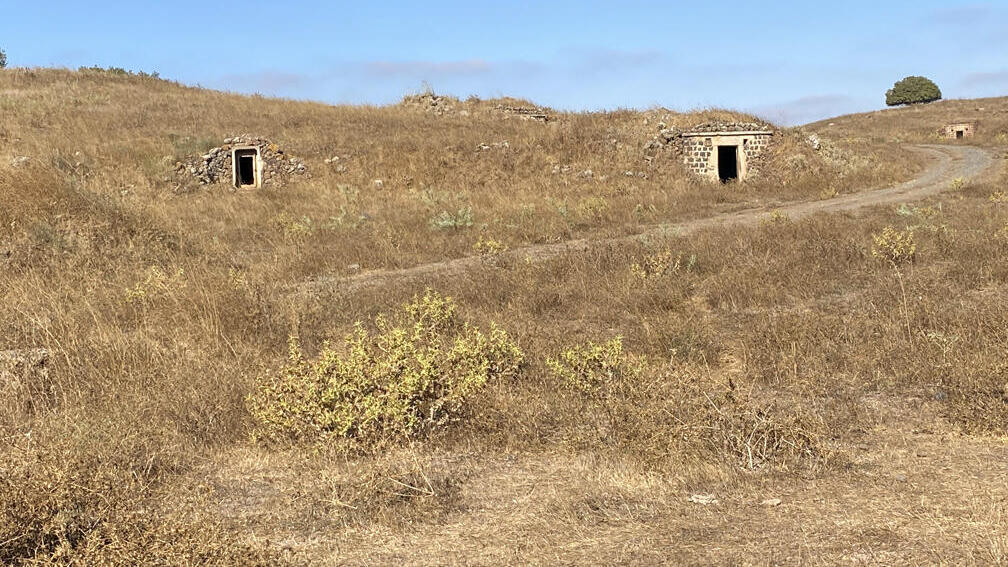

Abandoned Syrian bunkers at the foot of Tel Shifon on a jeep trip
(Photo: Gilad Carmeli)
In hindsight, it became clear that the residents of Ramat Magshimim were evacuated according to a covert plan to Kibbutz Lavi in Lower Galilee. "When we arrived there, we sat on the grass and witnessed the burning Golan Heights in front of us," she recounts. "We were anxious because our husbands were left behind, but suddenly they arrived too. As it turned out, half an hour after we left, the army came and instructed everyone to get into vehicles and leave immediately because the Syrians were very close."
Golan adds that "the members at Kibbutz Lavi were like our guardian angels and took care of everything we needed, but we decided that I would travel with my child to my grandparents. I arrived in Bat Yam, and it was very strange because I had just come from the battlefield – and there, the shops were open and life seemed normal." According to her, "When we returned after the war, we had to completely rebuild the settlement from scratch. But the big realization is that no one at any point considered the possibility of leaving Ramat Magshimim."
The continuation of the journey also includes a guided jeep tour through the scenic landscapes of the Golan Heights, with stops at several points of interest, including the ruins of Dalvah and Mount Bental. The participants also visit the Syrian headquarters and catch a glimpse of the story of Israeli spy Eli Cohen. The tour includes visits to vineyards and wine tasting at the Tel Shifon Winery. Participants are accommodated in renovated guest rooms at Kibbutz Ortal and enjoy full meals, including a lavish Druze meat dinner to conclude the first day. The journey is designed for both families with children and individuals, and the program is adjusted according to the group's participants.
"I believe that tourism should ultimately tell a story, it's not just about lifestyle," says Cheli Jacobs, the head of Ortal Tourism, herself a survivor of the Yom Kippur War. "The journey should not only bring joy but also guide participants through a process. However, in the end, it's a product enveloped in a tourist experience with food, music, wine, and attractions."
According to Jacobs, "The generation that experienced the war carries memories and scars in their hearts, while the generation born after it grew up in a country, culture and society shaped by the aftermath of the war. The new journey will expose the Israeli public to the Golan Heights – its people, perspectives, and viewpoints on the war that have not been told until now, the evolution of life and settlement in this beautiful land, and the silence after the war. In the past, they said that where the plow will pass, the border will pass, but I say that where tourists will pass – there the border will pass. If there's tourism, there's life – and people won't want wars because they'll have something to lose."
Participation in the journey costs 3,500 shekels per couple, not including private car travel (mostly on the first day). The journey departs in groups of 30 to 50 people. For more details and registration, visit the website.


